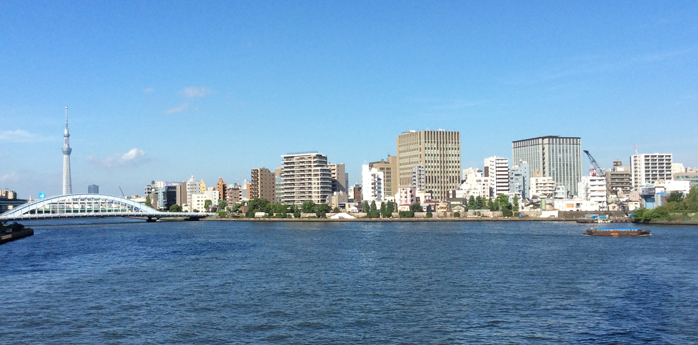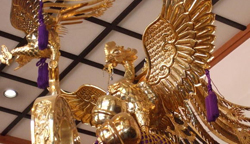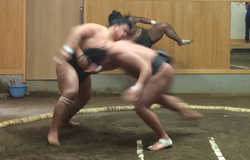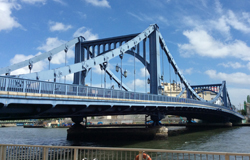




About Koto City
Koto City is located east of downtown Tokyo. It is a waterfront city, surrounded by the Sumida-gawa River, the Arakawa River, and Tokyo Bay. Each district is connected by numerous canals and bridges. The population is close to 500,000 and the total area is 40 km2.
Koto City is a very convenient sightseeing spot for tourists. Various railways and buses (even water buses!) run through the city, and it is an easy access within 30 minutes from major Tokyo tourist attractions such as Asakusa, the Imperial Place, Tokyo Sky Tree, and Tokyo Disney Resort.
"Tradition," "future," and "waterfront" are keywords when exploring Koto City.
The greater part of Koto City was a wetland until the Edo Period (400 years ago). Landfill began from the Fukagawa area, and many Buddhist temples, Shinto shrines, and samurai residences were moved from the downtown Tokyo area. Afterwards, many canals were built to transport goods to downtown Tokyo, and the Fukagawa area prospered as a lumbering, warehouse business, and wholesale dealer town.

You can feel "the tradition" by walking around the Fukagawa area. Traditional events and hand-craft techniques have been handed down since the Edo Period, and tradition is deeply rooted in the daily life in the local communities.
Fukagawa is notably a town of sumo stables. There are a lot of sumo stables in Koto City, many of which are situated in the Kiyosumi-shirakawa area. Kiyosumi-shirakawa is also an up-and-coming arts and crafts area. It has many art galleries, renovated workshops, and cozy cafés, which are scattered around the Museum of Contemporary Art Tokyo. While in Fukagawa, you may bump into a sumo wrestler or even discover a new favorite piece of art.


On the other hand, you can feel "the future" of Koto City in the southern seaside area. Dockyard business thrived in this area until the 1980s. With the recent urban redevelopment projects, the seaside area now has many skyscrapers and large facilities that cater to business, entertainment, and shopping. Crowd-pleasing music and art events are often held amidst the greenery of waterfront parks, and you can enjoy a relaxing stroll in the open spaces there.
In the Toyosu area, we boast the largest wholesale fish market in Japan. The venues that hosted the 2020 Tokyo Olympic and Paralympic Games are now utilized for significant international events. Here, you can witness Tokyo's continuous evolution and growth.
Let's walk along the Koto City waterfront, where the tradition and future live side-by-side. A newly emerging Tokyo will be revealed to you.


See Also
- Koto Excursion Information Service, the official sight-seeing information site of Koto City




